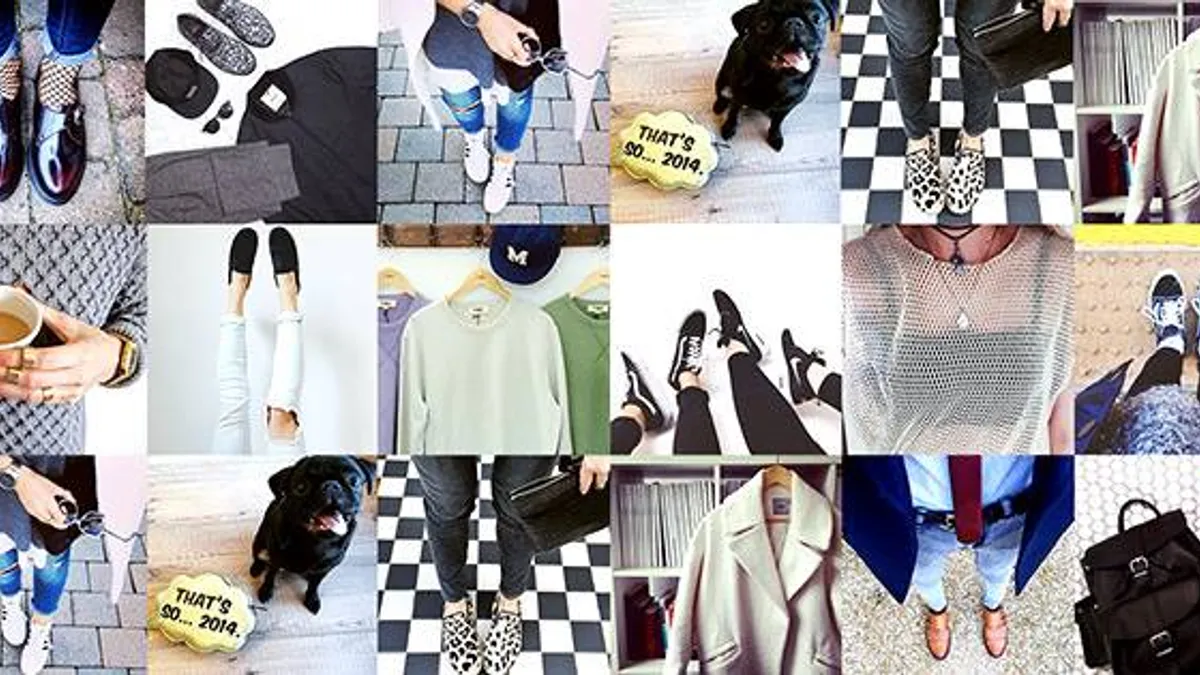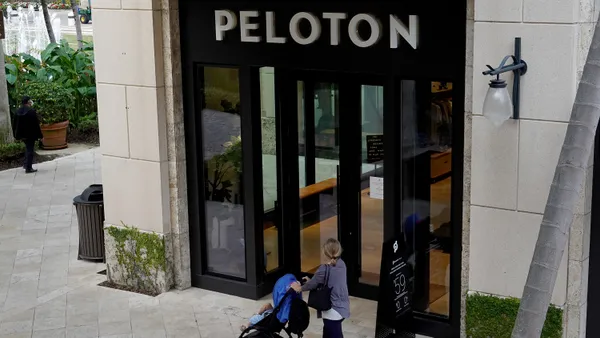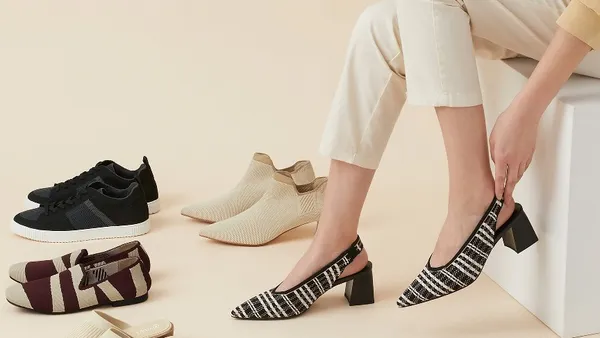Dive Brief:
-
Spanish Zara and Swedish H&M innovated the fast-fashion model decades ago and have brought the approach to the global stage. That’s helped fuel consumer demands for immediate availability of the latest styles, and even luxury labels have sped up their supply chains.
-
Now, in a challenge to those fast-fashion stalwarts, many smaller apparel brands have sped up the design-to-sale process even more, turning fast fashion into “ultra-fast fashion,” according to a recent report from research and consulting firm Fung Global Retail & Technology, "Fast Fashion Speeding Toward Ultrafast Fashion."
-
Boohoo.com, ASOS and Missguided can produce merchandise in two to four weeks, compared to five weeks for Zara and H&M and the six- to nine-month cycle for traditional retailers, according to the report.
Dive Insight:
Zara and H&M disrupted fashion by imitating styles from the runway and getting them onto store racks well before designers themselves made new collections available. It took a while, but the likes of Burberry, Tom Ford, Michael Kors, Thakoon Panichgul, Rebecca Minkoff and other high-profile fashion names have also drastically reduced the time they take to bring designs to market after fashion shows. In fact, many such brands have adopted a "see-now, buy-now" model, which allows consumers to buy designs straight off of the runway.
Higher end brands have had to respond because fast-fashion retailers tend to sell knock-off versions for months before the real deal is available, Shelley E. Kohan, VP of retail consulting at store analytics firm RetailNext, told Retail Dive last year. Kohan notes that some luxury brands, in particular Burberry, are beloved by millennials, more of whom increasingly have the cash to afford them. But, with that age and extra cash will not come patience, with very few shaking their expectations of immediate availability.
“Customers want it now,” she said. “There’s an emotional immediacy attached to that.”
Now lower-priced retailers like Boohoo and ASOS, which have strong (if not pure-play) e-commerce operations, are now challenging even the fast-fashion old-timers, according to Fung Global. Luxe brands and the fast-fashion companies until recently have largely eschewed e-commerce. British apparel retailer Primark doesn't sell online because the high costs interfere with its bottom-barrel prices. Luxury retailers, meanwhile, are behind in technology and have security concerns when it comes to shipping because of the high-dollar value of their goods. Plus, luxury customers expect their items to arrive in premium, carefully prepared packages. And when it comes to clothing, manufacturing cannot be rushed the way it is with lower-quality fast fashion.
“Ultrafast” fashion retailers, meanwhile, “avoid the historical retailer dilemma of product shortages versus excessive inventory, and ensuing markdowns and lower margins,” according to Fung Global’s report. They “operate agile supply chains to quickly match inventory supply with changing demand and strictly control inventory to create a balance between undersupply and markdowns. Initial designs are made in small batches to test demand, and, if successful, more items are quickly produced.”
Boohoo sources more than half of its products from the U.K., which allows the company to offer the latest trends and styles very quickly, getting product from concept to sale in just two weeks, according to the report; the company adds some 100 items to its site each day. ASOS brings its product from design to store in two to eight 8 weeks, depending on the complexity of the product and sourcing location, with an average of about six weeks, loading up as many as 4,500 to its site daily. Missguided launches 1,000 new products monthly and aims to get them onto its site in under a week, according to the report.
Zara used to produce a few collections a year but now introduces more than 20 collections, with a design-to-retail cycle is five weeks; replenishment of best-selling items takes two weeks. Zara stores get new products twice a week. H&M releases 16 collections each year, with production times varying from a few weeks to six months; trendier styles see faster production and delivery times. In response to the new competition, H&M and Zara have recently said that they’re investing to speed up their supply chains, the report notes.
These companies’ e-commerce approach allows for swifter addition of styles. Social media, along with the retailers’ own sales figures, helps drive intelligence on which styles to produce, according to Fung Global.
“The fashion design process is faster than it has ever been, due to the digital revolution,” the report states. “It is much easier for retailers to copy or obtain design inspiration from fashion runways and digital influencers. Social media is now a key tool informing sourcing strategy because it provides data on emerging and popular trends and styles. Pure-play online fast-fashion retailers are able to continuously refresh and rotate a large part of their assortments to drive customer shopping frequency.”















